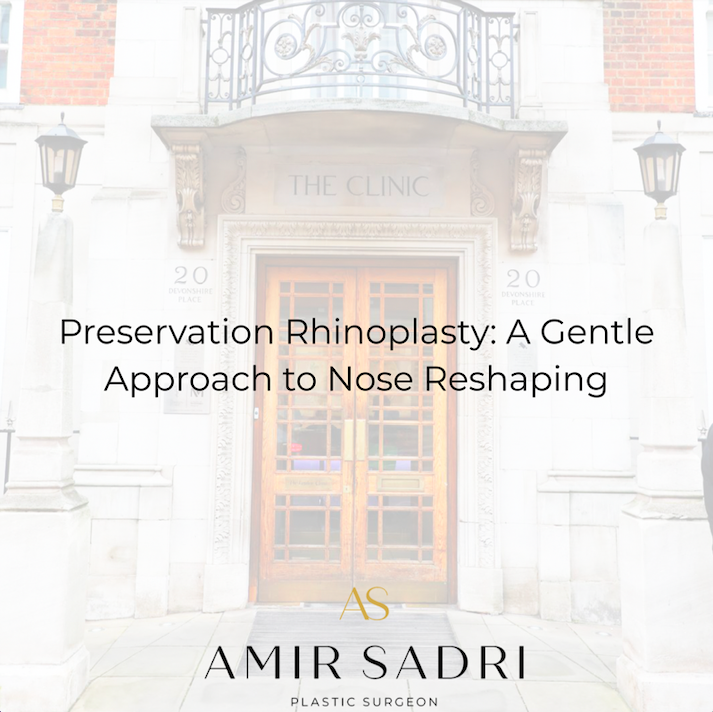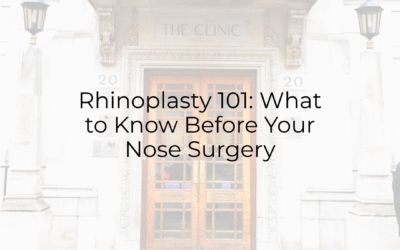For many years, traditional rhinoplasty involved a significant amount of cartilage and bone removal to achieve desired aesthetic outcomes. While effective, this aggressive approach often led to unpredictable long-term results, an unnatural “operated” look, and a higher risk of complications. Enter Preservation Rhinoplasty – a revolutionary technique that prioritizes maintaining the natural integrity of the nasal structure, offering a more gentle, predictable, and aesthetically pleasing outcome.
What is Preservation Rhinoplasty?
Preservation Rhinoplasty, sometimes referred to as “push-down” or “let-down” rhinoplasty, stands in stark contrast to traditional methods. Instead of removing large portions of cartilage and bone, this technique focuses on reshaping the nose by repositioning existing structures. The fundamental principle is to preserve the dorsal aesthetic lines (the natural contours of the nasal bridge) and the natural ligaments and soft tissues that support the nose.
The key to this approach lies in carefully releasing and repositioning the nasal bones and cartilage, often by pushing them downwards or letting them down into a new, more refined position. This minimizes disruption to the nasal anatomy, leading to a more stable and natural-looking result.
The Benefits of a Gentle Approach
The advantages of Preservation Rhinoplasty are numerous and compelling:
- Natural Results: By preserving the existing structures, the nose maintains a more authentic and un-operated appearance. The goal is to enhance, not erase, your natural features.
- Reduced Swelling and Bruising: Less trauma to the tissues means less post-operative swelling and bruising, leading to a faster recovery time.
- Faster Recovery: Patients often experience a quicker return to normal activities compared to traditional rhinoplasty.
- Improved Long-Term Stability: Maintaining the natural support mechanisms of the nose contributes to greater long-term stability of the surgical results. The risk of future deformities or collapse is significantly reduced.
- Minimised Breathing Issues: Preservation techniques are less likely to compromise the internal nasal valves, which are crucial for airflow. This helps to maintain or even improve nasal breathing post-surgery.
- Less Pain: While any surgery involves some discomfort, the gentle nature of preservation rhinoplasty generally leads to less post-operative pain.
Who is a Candidate?
Preservation Rhinoplasty is an excellent option for a wide range of patients seeking nasal refinement. It is particularly well-suited for individuals who:
- Desire a reduction in the nasal hump.
- Wish to refine the nasal tip without excessive removal of cartilage.
- Are looking for a more subtle and natural enhancement.
- Prioritize a quicker and smoother recovery.
However, it’s important to note that not everyone is an ideal candidate for this technique. Complex cases involving significant asymmetry, previous rhinoplasty surgeries, or extensive structural issues may still require a more traditional approach. A thorough consultation with a highly experienced facial plastic surgeon is crucial to determine the most appropriate technique for your individual needs and aesthetic goals.
The Future of Nose Reshaping
Preservation Rhinoplasty represents a significant advancement in the field of cosmetic nasal surgery. Its emphasis on respecting and working with the natural anatomy of the nose marks a shift towards more refined, predictable, and patient-centric outcomes. As techniques continue to evolve and surgeons gain more experience with this gentle approach, it is poised to become the gold standard for nose reshaping, offering individuals the opportunity to enhance their appearance with confidence and natural beauty. If you’re considering rhinoplasty, exploring the possibilities of Preservation Rhinoplasty with a qualified specialist like Dr. Amir Sadri could be the key to achieving the harmonious and natural results you desire.



